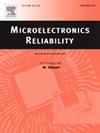Lidded SiP module: Warpage reduction techniques and thermal regime map
IF 1.6
4区 工程技术
Q3 ENGINEERING, ELECTRICAL & ELECTRONIC
引用次数: 0
Abstract
System-in-Package (SiP) modules, while common in mobile devices, face significant warpage and thermal challenges due to their large size and the close proximity of various components. Both package warpage and thermal performance play a vital role in the reliability of System in Package (SiP) modules. This study investigated novel warpage mitigation techniques, including Molded Thin Substrates (MTS), Back Side Stiffeners (BSS), enhanced Molded Thin Substrates (eMTS) and Lidded package. A test vehicle is developed to measure and characterize the warpage in different SiP module variants using the Shadow-Moiré technique. While MTS, BSS and eMTS showed some improvement, they ultimately fell short of meeting the required warpage reduction targets except Lidded package. The warpage mitigation techniques are further optimized for reducing the warpage below the target limits using a validated finite element warpage model. Lidded package emerged as the most effective solution for warpage control of the SiP module which can keep the SiP warpage within the targets. However, the addition of a lid introduced new thermal considerations due to an extra thermal interface material (TIM) layer at the lid interface.
A comprehensive thermal analysis is performed to study the impact of combination of system and package TIM resistances on the lid thermal performance, including the development of a novel metric - RTIMr, which represents the ratio of system TIM resistance (RTIMs) to package TIM resistance (RTIMp). The study found that a lidded SiP module can achieve superior thermal performance compared to a bare die SiP module when the . This research offers valuable insights into the complex interplay between warpage and thermal performance in the SiP modules. It provides a practical guideline for selecting appropriate system and package TIM combinations to optimize the thermal performance of lidded SiP modules. Future research can build upon these findings by further investigating the impact of package TIM thermal resistances on the warpage of lidded SiP modules.
求助全文
约1分钟内获得全文
求助全文
来源期刊

Microelectronics Reliability
工程技术-工程:电子与电气
CiteScore
3.30
自引率
12.50%
发文量
342
审稿时长
68 days
期刊介绍:
Microelectronics Reliability, is dedicated to disseminating the latest research results and related information on the reliability of microelectronic devices, circuits and systems, from materials, process and manufacturing, to design, testing and operation. The coverage of the journal includes the following topics: measurement, understanding and analysis; evaluation and prediction; modelling and simulation; methodologies and mitigation. Papers which combine reliability with other important areas of microelectronics engineering, such as design, fabrication, integration, testing, and field operation will also be welcome, and practical papers reporting case studies in the field and specific application domains are particularly encouraged.
Most accepted papers will be published as Research Papers, describing significant advances and completed work. Papers reviewing important developing topics of general interest may be accepted for publication as Review Papers. Urgent communications of a more preliminary nature and short reports on completed practical work of current interest may be considered for publication as Research Notes. All contributions are subject to peer review by leading experts in the field.
 求助内容:
求助内容: 应助结果提醒方式:
应助结果提醒方式:


